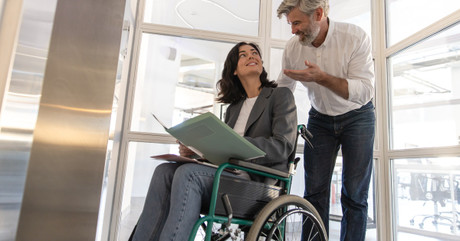Debunking Common Airless Tire Myths & Misconceptions
Oct 7th 2025

Wheelchair users continually seek ways to enhance their independence and mobility. When airless tires hit the market, they promised to solve many common tire problems, but they also sparked plenty of myths and misconceptions. Let's debunk some common myths and misconceptions about airless tires so you can gain a more accurate understanding of how they can work with your tires.
Myth 1: Airless Tires Are a Marketing Gimmick
No, airless tires are not just a marketing gimmick. They are a legitimate technology with real benefits that can help wheelchair users. Airless tires use solid materials or honeycomb structures that genuinely eliminate the risk of flats. They're not magic—they're engineering.
Companies have invested years into developing these tire technologies and have tested these products extensively. Testing under real-world conditions proves the effectiveness of airless tires for wheelchair users who require reliable mobility solutions.
Myth 2: They’ll Make Your Ride Uncomfortable
Many people assume that without air cushioning, airless tires must be harsh and uncomfortable. This misconception likely stems from early solid tire designs, which were indeed quite rigid.
Today's airless tires use sophisticated materials and designs that provide excellent shock absorption. The honeycomb or foam structures inside these tires compress and rebound just like air, creating a smooth ride. Some users actually report that certain airless tires feel more consistent than traditional pneumatic tires, which can lose air pressure gradually and affect ride quality.
Myth 3: They are Impossible to Install or Replace
This myth persists because airless tires don’t work like traditional tires, confusing many who are used to that installation style. You can't just pump them up or patch a hole. However, installation isn't rocket science—it just requires different techniques.
Most airless wheelchair tires are designed as complete wheel assemblies or use mounting systems that wheelchair repair shops can handle. While you might not be able to change them in your garage like a bike tire, professional installation is a straightforward process. Many wheelchair users find the trade-off worthwhile since they'll never have to deal with roadside tire changes again.
What the Research Actually Shows
Independent testing has demonstrated that high-quality airless wheelchair tires can match or exceed the performance of traditional pneumatic tires in numerous areas. They maintain consistent performance regardless of temperature changes, provide reliable traction, and eliminate the single biggest frustration wheelchair users face with traditional tires: unexpected flats.
However, they're not perfect for everyone. Users who require the lightest weight setup or those who frequently adjust tire pressure for various activities may find traditional tires more suitable.
Make the Right Choice for Your Lifestyle
Before you decide on airless wheelchair tires, don’t let the myths and misconceptions overwhelm you. The decision between airless and traditional wheelchair tires should be based on your specific needs and priorities, not fictional claims.
Consider your daily activities, typical terrain, and how frequently you currently encounter tire issues. Many wheelchair users find that the peace of mind from never having flats outweighs any potential drawbacks.
Visit DME Hub to find the right airless tire options for you. We offer a variety of options that can fit your chair and provide you with the best ride possible.

